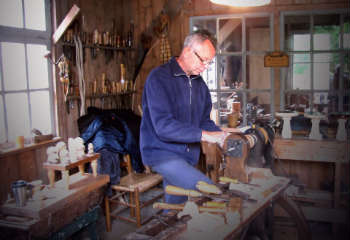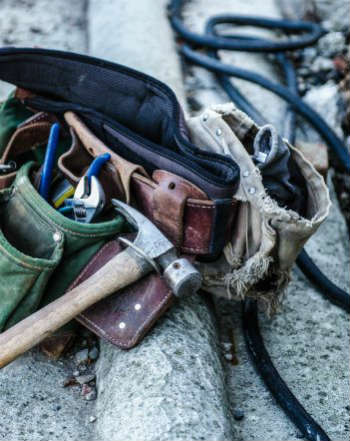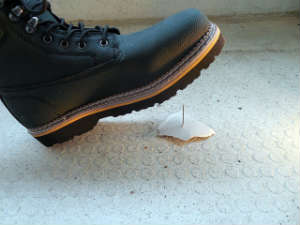Nail guns are used daily in construction jobs. They improve productivity and efficiency, have replaced hammers and are powerful and easy to handle. However, they also result in thousands of serious injuries annually. Injuries caused by nail guns are not an uncommon occurrence, even when it comes to carpenters using them.
Carpenter Near Death Accidents Using Nail Guns
An accident took place when a home builder in Minnesota came close to losing his life while framing a closet. The  home builder cannot clearly recall the near death miss ordeal but, he said he must have hit the nail already in the frame and caused it to bounce back into his face and deep into his skull. Unaware of the extent of the injury, he asked his friend to take a picture. The nail was lodged in his skull close to his eye. Luckily for him, when he arrived at the hospital, the doctors were able to perform surgery and remove the nail without further damage to his eye or brain.
home builder cannot clearly recall the near death miss ordeal but, he said he must have hit the nail already in the frame and caused it to bounce back into his face and deep into his skull. Unaware of the extent of the injury, he asked his friend to take a picture. The nail was lodged in his skull close to his eye. Luckily for him, when he arrived at the hospital, the doctors were able to perform surgery and remove the nail without further damage to his eye or brain.
In another incident, two carpenters were working together to lay down a sub-floor. Laying down the sub-floor required them to use a nail gun to nail it down. One carpenter was waiting while holding the nail with his finger squeezing the contact trigger. The other was moving backward towards the one holding the gun while dragging a sheet of plywood. The worker with the plywood backed into the tip of the nail gun and was injured in the back. The nail gun pierced his kidney but he was lucky to survive the ordeal. Due to the accident, the contractor changed and instructed the workers to use only sequential triggers on framing nail guns. This is because workers can get injured if they bumped into each other unintentionally.
Carpentry Related Nail Gun Injuries
A study found that two out of five residential carpenter apprentices have had a nail gun injury over a period of four years. Injuries resulting from using nail guns have hospitalized more construction workers and carpenters than any other construction and carpentry tool.
Statistics from the Centers for Disease Control and Prevention’s National Institute for Occupational Safety and Health (NIOSH) indicate that 60% of approximately 37,000 emergency room visits every year are occupationally related. Most injuries are puncture wounds to hands and feet and some are fatal that they result in death. It is not just people who use nail guns that get injuries from them but, also those who are close when they are in use. Other potential dangers include using a nail gun with a lack of training, working fast and squeezing the trigger when not nailing. One mistake that some people make is not reporting a nail gun accident or failing to seek proper treatment. Research has shown that the danger posed by nail guns it twice as high when using a multi-shot contact trigger as when using a single-shot trigger nail gun.
Nail Gun Accidents Data Collection
An in-depth analysis by U.S Consumer Product Safety Commission and NIOSH on data collected from emergency departments across the country shows that injuries to consumers and workers mainly involve puncture wounds to the hands and fingers, with forearm, wrist, leg and foot wounds less common. Of the injured consumers and workers, six percent visited and were admitted to a hospital, while the remaining were treated in the emergency department and went home after treatment. Approximately 96 percent of the injured consumers and worker were found to be males with the average age being 35.
The consumer product safety body believes that this number of injuries can be brought down by the use of sequential trip triggers which is safer to operate. Injuries are also due to many consumers and workers not receiving adequate training on how to use a nail gun correctly. In addition, consumers are not aware of the different types of nail guns.
Nail Gun Accident Prevention Measures
It is important to understand that prevention of injuries comes from understanding the best ways to use nail guns,
knowing how some gadgets pose greater risks than others and realizing that operating nail guns properly will go a long way in ensuring worksite productivity and safety. Construction workers and carpenters can engage their employers to talk about nail gun safety and prevention. Employers should take the necessary steps to ensure that they prevent and reduce nail gun accidents. Below are some ways employers should consider when taking safety measures:
- Use full sequential trigger nail guns
- Provide training
- Establish nail gun work procedures
- Provide personal protective equipment (PPE)
- Encourage employees to report and discuss injuries and close calls
Lastly, employers and construction workers should seek medical attention as soon as there is a nail gun injury.





